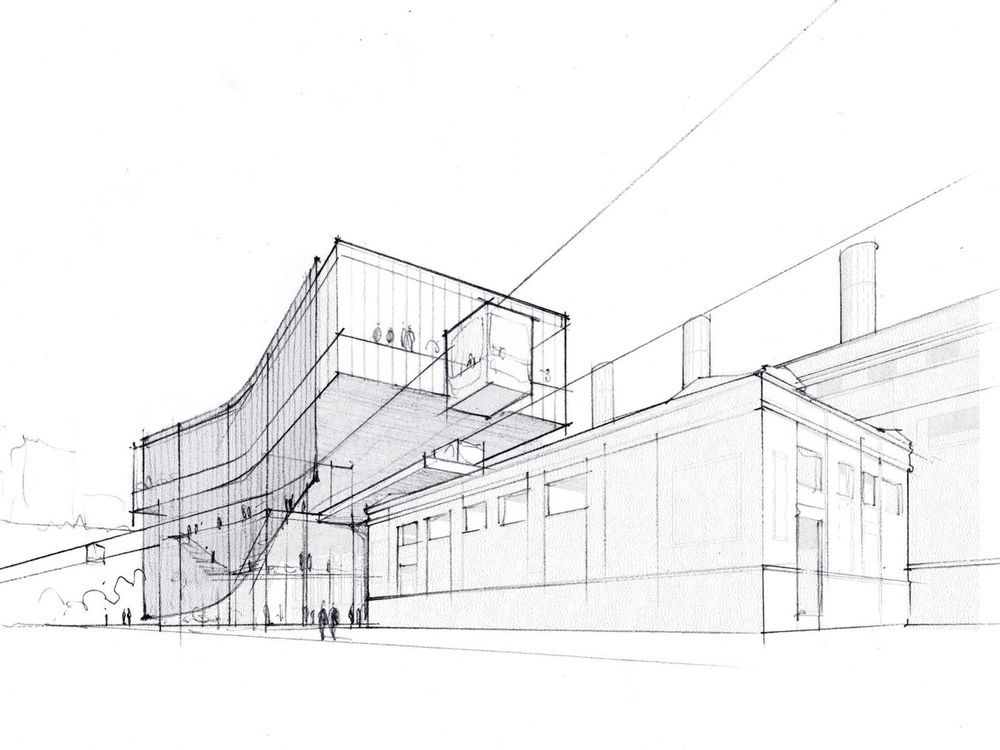Warning, this post ended up being a long one (1/2).
"[It] would add a non-essential, redundant transportation corridor to an area well served by many transportation crossings including the new Walterdale Bridge."
I didn't realize that a single vehicle bridge crossing the river is comparable to a gondola that would connect two key pedestrian corridors, the funicular, and the beautiful Rossdale Power Plant. Sure, ETS buses use that bridge too, but those routes are by no means the same. Just the detour to the UofA Transit Centre alone can add a lot of time when compared to going directly to one's destination. And who's to say what qualifies as a "non-essential" trip? Are essential trips only allowed on ETS? Will Prairie Sky prohibit people from using the gondola to access appointments, run errands, or see family and friends? Do the trips that we can make to Southgate via the LRT really count as essential if most are probably to buy non-essential goods - and a fair number of those shoppers are tourists? How does that differ from this? After all, the area around Southgate has a number of other transportation modes as well, including sidewalks and roads! And again, even if lots of the trips on the gondala are non-essential, SO WHAT?? What is the friggin harm in getting something unique here that people WANT to experience even if they don't have to? What joy does living in a city bring if everything there is strictly utilitarian, and you need to leave that city to see anything interesting? And why wouldn't we want to bring things here that encourage people to see Edmonton and experience what we have to offer, as opposed to going to another Canadian city?
"Proponents proffer phrases like — “transit-oriented development” — to feign alignment with the city plan. Without surprise, a private entity is being assisted at the public’s expense by Edmonton’s developer-friendly city administration. This works well in cites where public purpose, community benefit agreements and social procurement are front and centre. In this case, the citizens pay."
Ah, fluff words without any sources or examples to back them up. This can't encourage transit-oriented development... because it can't. The citizens pay for this... because they will. Does the city have an agreement to give PS a cut of Arc revenue, should the two share the Arc system? Not as of now. The Arc revenue goes straight to the systems involved with the tap; ETS gets revenue from taps on ETS routes, StAT gets the revenue from taps on StAT buses, etc. So even if PS did use the same Arc system (keep in mind that, according to
@PrairieSkyGondola, they'd need to pay a not-insignificant price to do so), they would (in theory) only get the revenue from taps at gondola card readers.
"it will add an additional electric load to Edmonton’s fossil-fuel heavy grid. We all know we need to reduce electric loads as we green our grid. The addition of a gondola will only burn more coal."
What a strawman this is. Not only does it ignore the fact that facilitating electric modes of mass transportation makes it easier for people to navigate Edmonton without cars (or diesel ETS buses at that), but it also perpetuates a harmful myth about electric transportation in general. They are equating the emissions from the power grid as equivalent to the emissions from fossil fuel-powered vehicles. In reality,
research has shown that "under current carbon intensities of electricity generation, electric cars and heat pumps are less emission intensive than fossil-fuel-based alternatives in 53 world regions, representing 95% of the global transport and heating demand. Even if future end-use electrification is not matched by rapid power-sector decarbonization, it will probably reduce emissions in almost all world regions." And the gondola would have even fewer life-cycle emissions than EVs, since each car does not contain its own batteries. Similarly, the gondola would be better for the environment, even with our gas-dominant power grid, compared to conventional vehicles. This is because it is simply more efficient to generate a lot of energy in a few spots and distribute it through the grid than it is to generate a little bit of energy in millions of small engines that each burn their own fuel, start up multiple times per day and often need to warm up for a few minutes each time, etc.
"The city plan is designed to address climate change and add tree canopy and green space. Green jobs and blue and green infrastructure are at the base of most economic-recovery plans that address climate change. The gondola will not help with these core ambitions."
Notice how they neglect to define what blue infrastructure means. Does it have a similar meaning to blue hydrogen, where gas is used to make hydrogen but the emissions are pumped underground? Would their opinion on the gondola change if PS invested in CCS technology? Why is the gondola, which is powered by electricity and will provide mass transportation for pedestrians, not considered blue?
